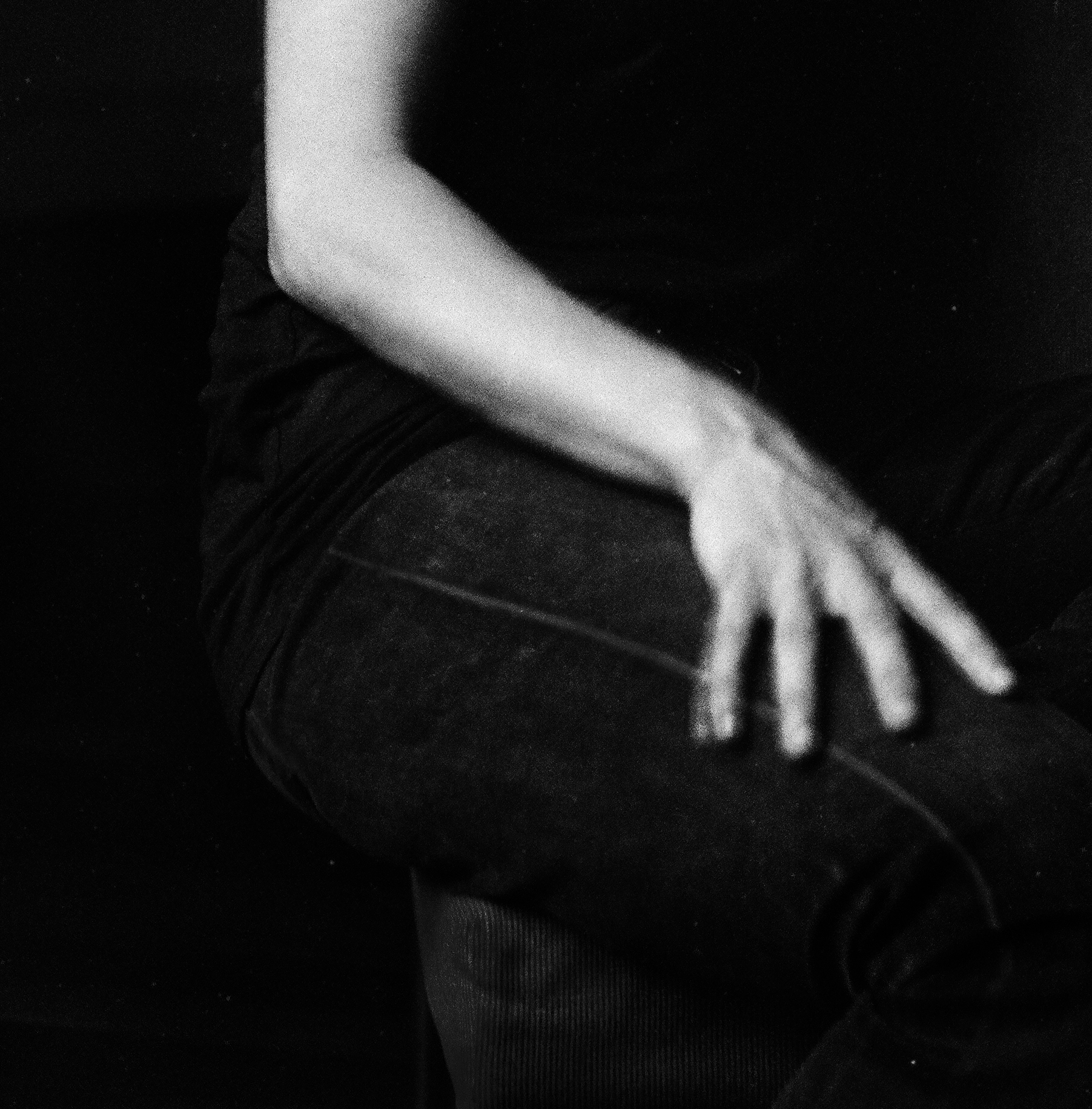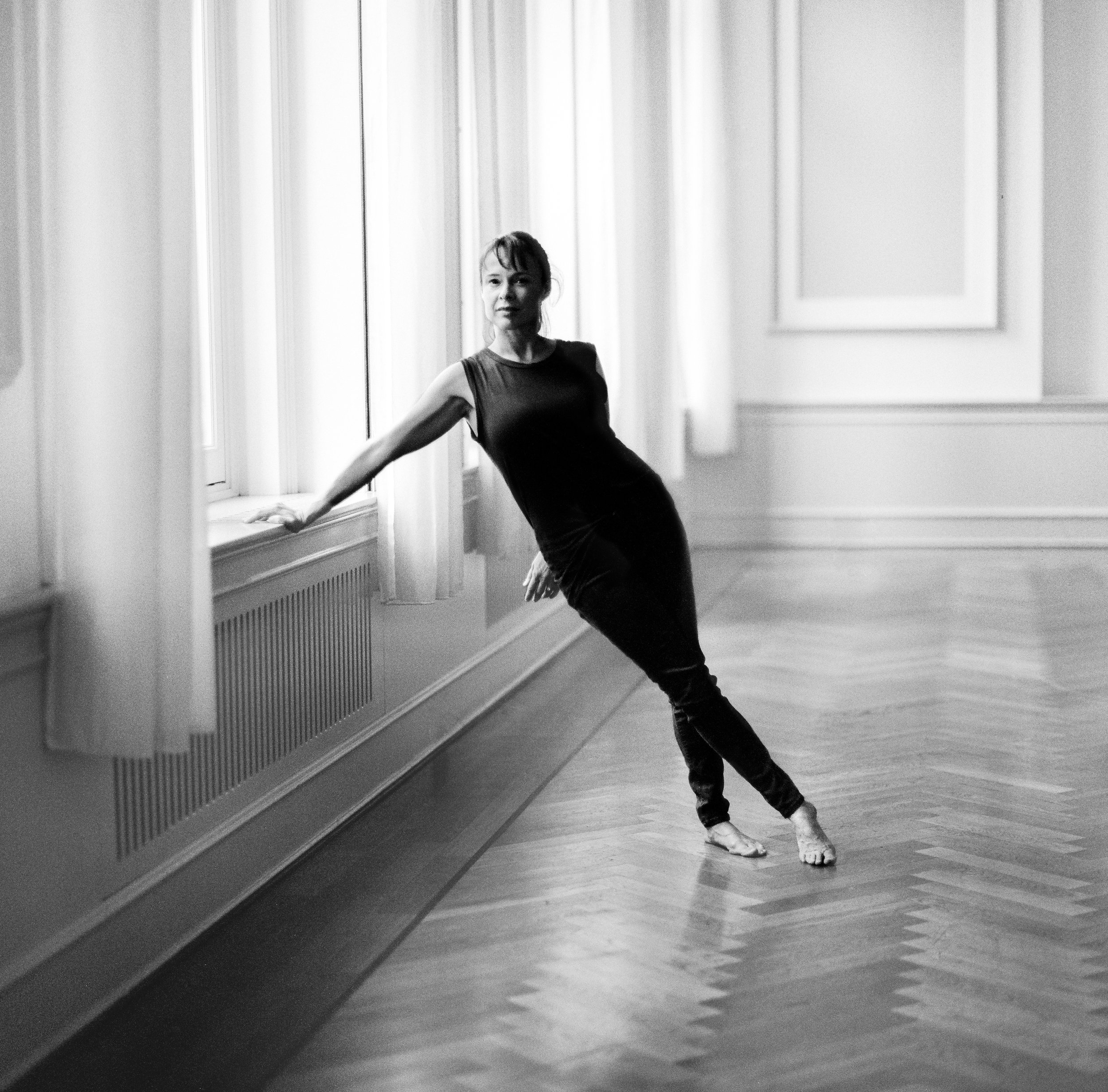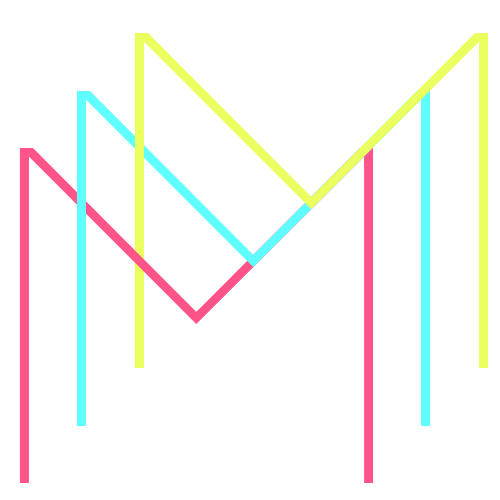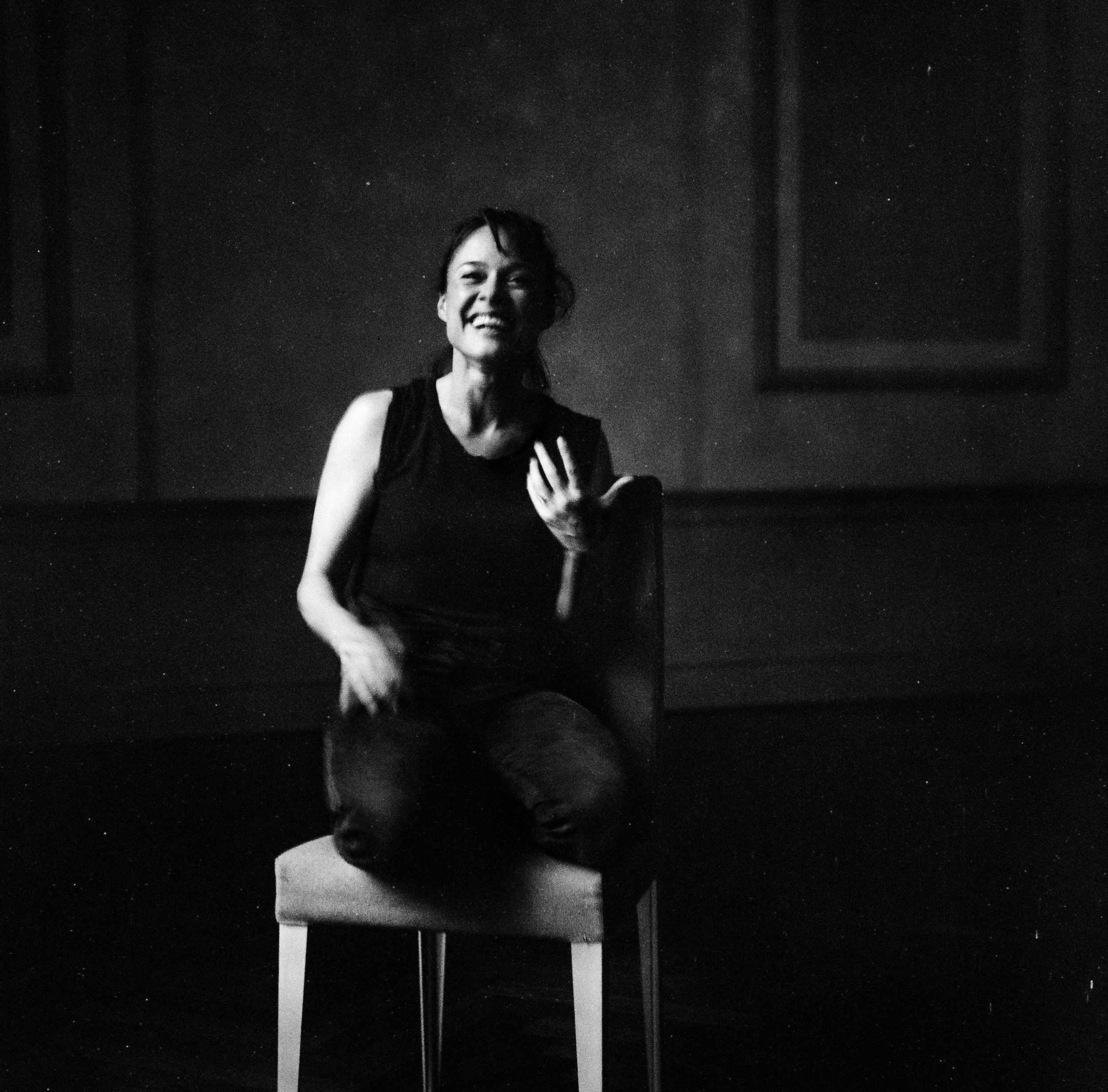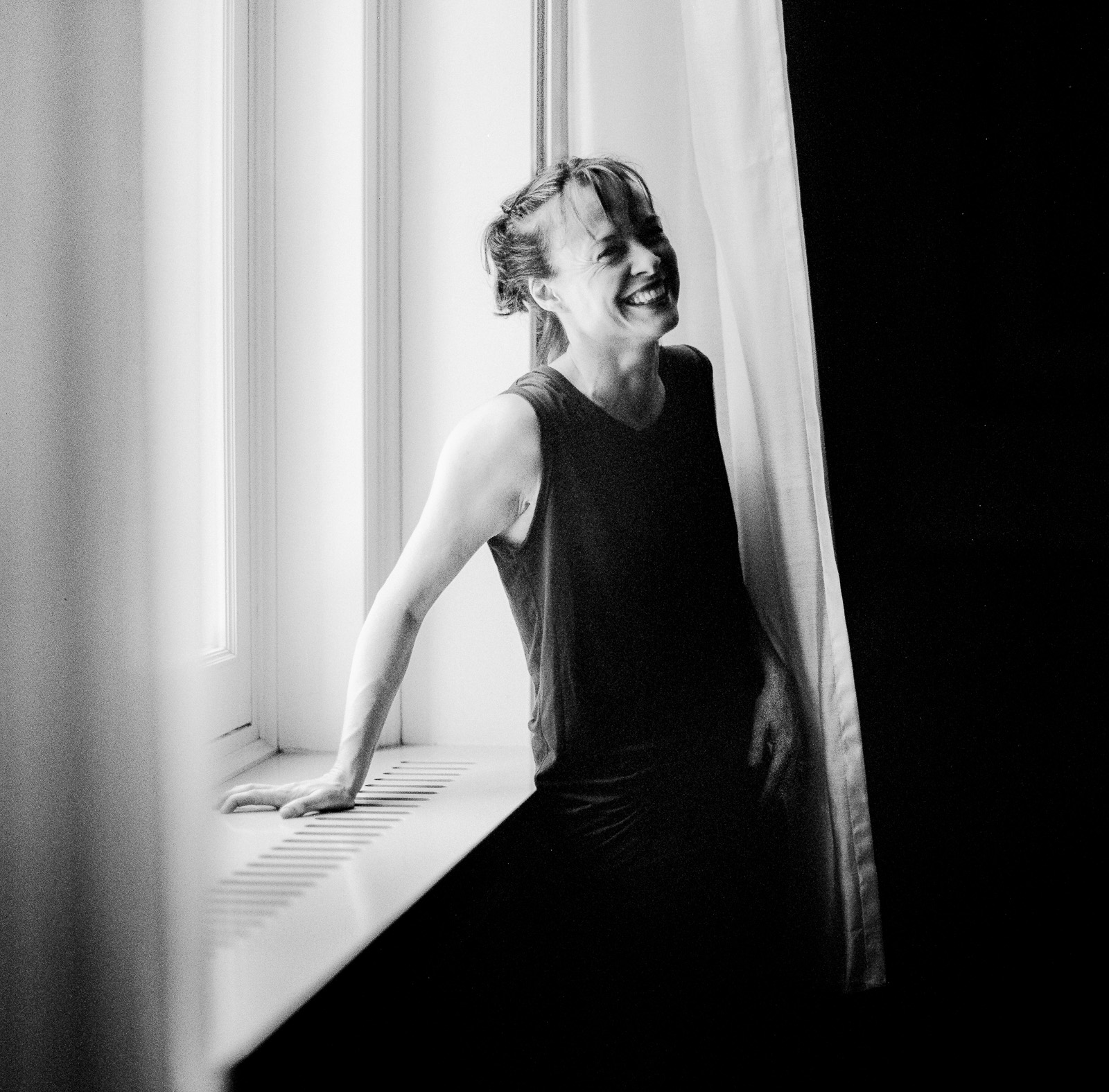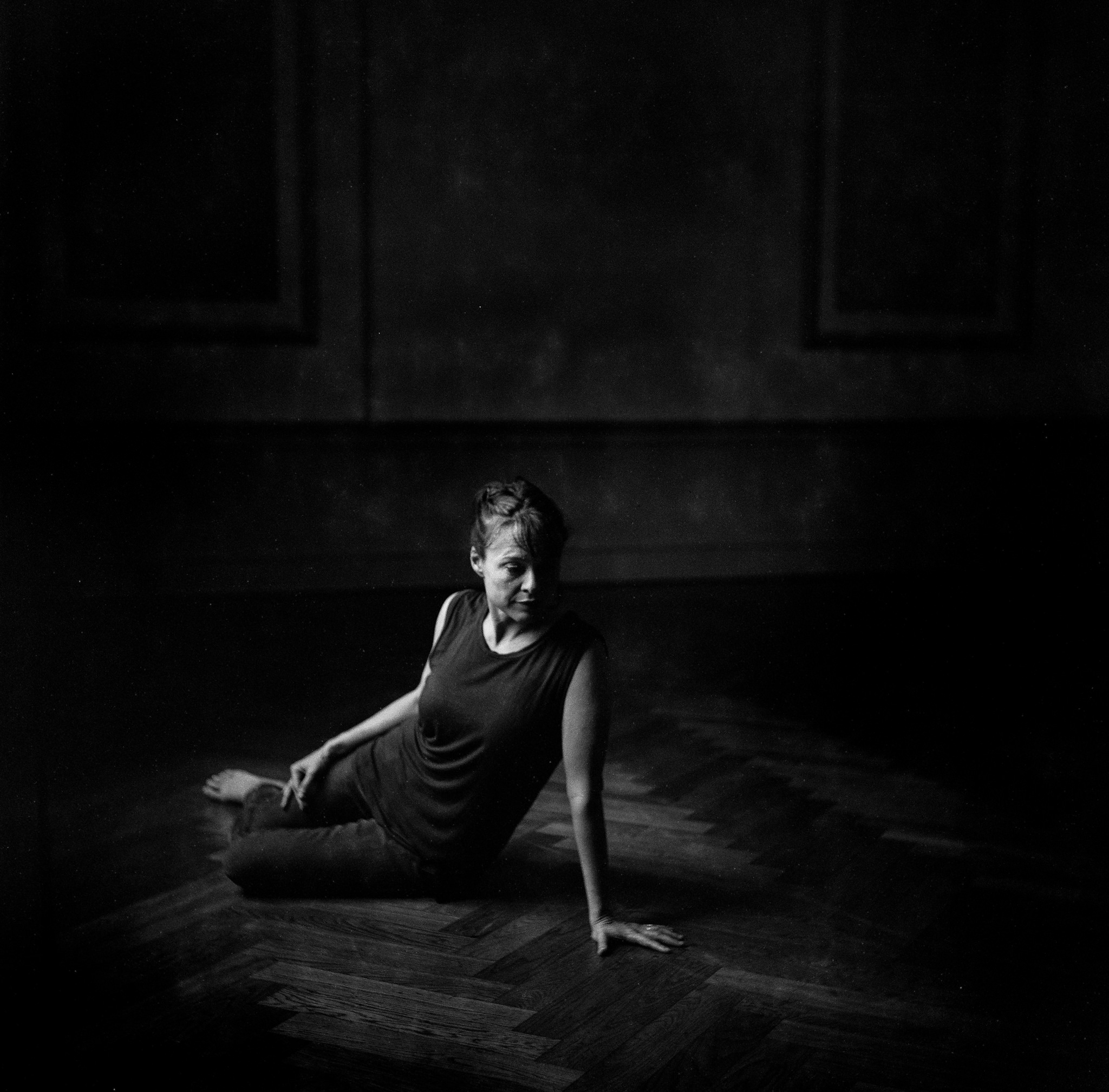Tami Stronach
Interview: Oli Sansom
Photography: Oli Sansom
As we dance our body gets unstuck:
the mobility we practice physically is then translated into our emotional life… movement itself becomes like an elevator that carries stuck emotions up and out of us. It’s such a life-affirming thing to do. So I started creating for my own well-being.
Tami Stronach: Dancer
New York / August 2016
An understated 80's herione, wielding power through grace and empathy, The Neverending Storys' Childlike Empress was a yardstick character who's screen-time ended up being inversely proportional to their impact on viewers (and, poster real-estate).
In the years since her incidental casting in the 1984 Wolfgang Peterson epic that found favour among adults and children alike, Tami Stronach has carved an enormous career across choreography and dance, following a considered rejection of the Hollywood machine.
Stronach develops performances spanning the abstract to cognitive through Tami Stronach Dance, over to family entertainment for young and old through Paper Canoe Company, founded with her husband Greg Steinbruner.
Over a couple of mornings, Mannequin (aka Oli, awkwardly loaded to the nines with archaic cameras like Labrynths' junk lady) spent time with Tami as she prepared for her collaborative piece with Tomáš Dvořák for Prague Effects at the Czech Centre, New York - an immersive dance piece where Tamis dance interacts with projected light, in turn activating sounds and music.
Tami Stronach
The Neverending Story
Tomáš Dvořák & Tami Stronach - Prague Effects
Video courtesy of Czech Center New York
Where did your initial spark to create come from?
As a child I wasn’t thinking about which medium to focus on: I was always making up songs, dancing, imitating people, and putting on shows.
I’ve always loved interdisciplinary work… the space between mediums. I like considering the space between things generally: cultures, ideas, etc. Isn’t creating art the labor of sharing our internal worldview with others? The practice of taking what is inside us and giving it form, so it can become part of the external world?
Looked at this way, art can be considered a seam between inner and outer spheres.
I was told by many teachers not to mix art forms since the concerns of each medium were different. That never made sense to me.
In my case the performing arts had a strong gravitational pull. I was a ham, and I liked the attention; but if I’m pressed to go deeper, maybe it’s also because life always hit me really hard. I became a vegetarian at age four of my own volition because killing animals for food and especially the cruelty of factory farming seemed like madness.
Being a really emotional person was not an asset most of the time, especially since as a child you can’t do much to change things or have anyone take your point of view seriously. But in the context of performing it was valuable. Connecting easily with my emotions was desirable while acting. So from very early on I felt at home in theater and dance circles.
So, I went into the arts to have a way to productively engage with my bulky emotions. That has evolved into a desire to create spaces for other people where their interior life and their bulky emotions, or their overly suppressed emotions, can breath.
A great story delivered with strong visuals is a wonderful and familiar way to escape our lives and slip into someone else’s reality. In commercial film that is often an emotional rather than a cerebral experience.
Not everyone has sought out or been given the tools to “read” movement vocabulary while scanning for metaphor - and I’m not sure everyone would want that rather rarified training. But for the die-hard, concert dance/dance-theater fans the detective work of making meaning is where the pleasure of the experience lives.
Film and dance connect with audiences in different ways.
Film audiences have been trained to follow a linear narrative, starting at any early age. A great story delivered with strong visuals is a wonderful and familiar way to escape our lives and slip into someone else’s reality. In commercial film that is often an emotional rather than a cerebral experience.
With concert dance, or dance-theater, the whole experience is more abstract and poetic in nature. The audience is smaller for this type of material, and it tends to be an audience that enjoys ambiguity.
Dance phrases are open-ended snippets of information: they don’t deliver finite “meaning,” but one can decode the movement language over the course of the work by recognizing recurring physical themes and analyzing how the different elements - music, costume, lighting - that make up the work of art, are interacting.
It might seem really simplistic but all creatures curl into a ball when they want to protect themselves or open themselves up as they reach out to make connections with the world. If you watch abstract movement and keep that in mind, things get interesting.
Dance-theater speaks to me because on the one hand it can be very cerebral with its formal concerns, and on the other hand it can wiggle its way to the gut before you know what hit you. Also the kinetic rush movement produces is thrilling, as is the physical dexterity it requires.
To me movement is never entirely abstract because human beings are involved. But “meaning” in dance can slip away as quickly as it arrives into a sea of shapes and textures: abstraction and coherence melt together and split apart with kaleidoscopic grace.
So… dance operates on a lot of different levels and how it connects with audiences really depends a lot on the way each individual viewer chooses to engage with it. Film, the Hollywood kind, is not as layered, to my mind. Cineastes might assail me for that, but that’s how I see it.
But that’s not to say one always wants such a nuanced experience: there are stories and ideas that are better conveyed in more direct ways. There is room for many approaches and the more forms and expressions the merrier.
How does building audience trust in the moment in an interactive, present format differ to that within a fixed format such as film?
To get people to trust your performance, in either format, you need to lose yourself in the moment and not give in to being self-conscious…so the heart of building trust is the same for both mediums. To be able to lose yourself you need to do a lot of homework and know the material really well. But what is unique to live interactive performance is that it is a true collaboration with the audience - the quality of engagement coming from the audience will absolutely improve or dilute the impact of live work. In film, if you are working with a good director, you have the advantage of getting verbal feedback immediately after the take so you can make adjustments. On the flip side film can sometimes be about everything other than the acting…the lights, the fly on the wall that messed up the frame, the sound boom etc… and young directors can sometimes lose focus when it comes to directing the acting, as they are consumed with technical aspects of the shot.
I like long, thorough rehearsal processes. In my experience, most audiences will dive into anything for about 10 minutes - so the real issue is not losing the trust they give you at the outset. For the most part that is about the structure of the piece - If the structure isn’t supporting the performers then it’s going to be an uphill journey.
When performing feels easy it’s because the piece is carrying you, and all you need to do is relax into it.
Can you talk a little about the importance of participating in the work you design & create yourself, and how that affects it vs creating the work, but not participating in it?
When I was young I tended to be in everything I made. This meant I was very kinetically invested in the work. I did video-tape and watch the dance material I generated but I would say that that type of process encouraged me to follow my physical impulses and kinetic intuition over visual organization as a guide. Performing my own material meant I had a very strong connection to it which can be an advantage.
As I got older I tended to step out of the pieces for the bulk of the creative process so I could have more of a birds eye view of what happening and then step back in the work for small sections.
Now in my mid-forties, it is time to switch to the choreographers chair. This means relying on the intelligence of more nimble bodies to supply that kinetic logic, while taking advantage of the objectivity that being an outside eye provides.
What have been some of the triggers or memorable moments for iterating a piece you’d begun, or developing a brand new body of work
“Contain yourself, Darling” was one of my first pieces. In the dance there was one character that “lived” in a claw foot tub while wearing a heavy winter coat. Behind her were paintings of blue sky contained in heavy metal frames. Throughout the work this character tried to gently inch out of her “nest” while feathers spilled out of the sleeves of her coat. It looked the like the stuffing was coming out of her… like her “insides” were leaking out - it looked dangerous… like she might disappear. A lot of other events and characters filled the dance but at the close the whole stage was covered in these feathers. At that point our heroine leaves the bath, sheds the winter coat and dances through the billowy feathers.
They respond to her sweeping movements. Somehow the scene is transformed: the stage became a beautiful landscape that evoked clouds - freedom.
Making that work helped define my working process for years to come.
It was a critique of women being viewed as hysterical by a culture that suffers from a profound lack of curiosity about benefits of mining our interior landscapes.
In making that work I allowed myself to create in a very intuitive way - a leap of faith that something useful would emerge from tapping into the unconscious. I spent months making material without understanding why I was making certain dance phrases or writing certain bits of text or crafting certain images… then one day all the pieces started to have this magnetic pull and they just started organizing themselves.
It’s like getting a map from your subconscious mind.
I am still challenging the notion that being emotional is a weakness:
a flaw that afflicts women in particular - something to be "outgrown".
That piece woke me up to my own mission as an artist and teacher. Since making that dance I have spent my life discussing in different formats, in different works of art in different classrooms the value of creation and imagination - the importance of tuning into internal spaces and having the courage to manifest in the world the things we know in our hearts.
Art is a potent example of how a feeling or thought inside of us can be given concrete form in the outside world. Once we see that that is possible we are empowered to build a better world in different arenas - “better” meaning kinder, more idiosyncratic, and more colorful.
With one of my latest pieces, “Around the Bend” I was focusing on the idea of being in the middle of things. I chose this subject because I needed to redefine what being in the middle of my life and the middle of my career meant to me.
So I have a very personal relationship with this theme.
In thinking about the word middle I found a lot of negative connotations… midlife crisis, man in the middle, mid level employee, middle ages, middle of nowhere, mid-term elections… there were also some good connotations regarding being in the middle, but mostly they were associated with space not time… being central is good; running out of time is bad.
Overall I felt that we tend to be more interested in beginnings and endings and don’t have that much patience for the messy middle.
My parents are also very much reaching the ends of their life and it seemed like an urgent project to wake myself up to any unfinished business I have. I made the dance as a kind of meditation on reinvigorating the notion of being in the middle as something full of possibility.
I love poor theater because it activates the imagination…one door placed just so evokes a room, a glass of wine and two bottles placed just so and we believe the characters are at a fancy party… I think our imagination does an amazing job at filling in the gaps and with huge budgets directors can lose sight of that.
Everyone loves a good rags-to-riches, started-from-the-bottom narrative. The classic protagonist against the odds story is a digestible front for the deeper value that struggle as a tool can impart on a process. What role do limitations play in your own work, and how do you use tools like that to inspire your thinking on a ground level, and especially in the context of a production?
I chose to be a modern dancer knowing there is no money in this field and that most people don’t even know what it is. But I loved it and I was so inspired by its founding mothers… Duncan, Dunham, Fuller, Wigman, Graham, Humphry etc...early modern dance was shaped by women. What other American art form can say that? I wanted to be a part of that legacy.
Ironically over time this feminist foundation would be eroded.
The arts have been so decimated and undervalued over the last 20 years and dance has been on the front lines of that battle. What little government funding remains typically goes to very large artistic institutions or when it does make its way to choreographers it is disproportionately awarded to male choreographers - that is happening in a field where men only make up 20 percent of dance population.
That’s a tiny little sliver of the dance world.
It’s pretty hilarious that the sexism in dance is in some ways magnified because men are such a rarity but as a culture we are used to men leading and so in the end they typically still do even when the math would seem to support the opposite outcome.
But I stayed in the game and insisted on making my own corner.
I’ve been blessed to always somehow (and its never easy) find enough money to pay my performers and design team and to have incredibly talented people to work with. But the resources I’m working with are limited. If I want to cover the stage and the walls with chrysanthemums I’ll have to settle for a big bouquet.
I think this kind of pairing down can really push you to make more artistically justified choices and not hide behind gimmicks. If the set is more interesting then the content of a show then you are in trouble.
I love poor theater because it activates the imagination… one door placed just so evokes a room, a glass of wine and two bottles placed just so and we believe the characters are at a fancy party…
I think our imagination does an amazing job at filling in the gaps and with huge budgets, directors can loose sight of that.
Now to be clear… I greatly appreciate donations for TSD and frequently dream about making work for ridiculously lavish sets… but in the absence of that I’ll look for other interesting solutions.
If you aren’t sick and you have all your body parts, then its time to be grateful and get to work.
You’re 16 years into your own dance school, and now have several more such as Paper Canoe Company. How has the ownership of your own dance bodies affected your relationship with your craft?
When I graduated from college the dance company model where you work 8 hours a day and get health insurance and work year round was already dying. I actually landed a job in a company like that but turned it down because I didn’t love the aesthetic.
I didn’t understand how rare that kind of stability was in the dance world.
So my own nature combined with the economic reality of dance just pushed me to create my own companies. When I was 4 years old and went to ballet class I migrated from the barre, ignored the teacher’s instructions, and just improvised in the center of the room to the music.
My teacher was kind enough to let me do that.
That’s a nice teacher.
I know that is totally nutty, and I spent many years later at the barre doing as I was told, but that piece of me that just needs to move my own way and do my own thing is still very much in charge whether I like it or not. The flip side of how challenging this life can be is the freedom one gains to examine the things one wants to learn about and spend time discussing.
It’s far from easy, but it’s the road that calls.
Tami Stronach / The Maid and the Marmalade (excerpts)
A major theme in your work is the bringing of disparate elements together, which you've connected to your diverse childhood from Iran, to Israel, to the USA. Where do you go within or external to yourself to find or grow your creative vocabulary now?
Building a creative vocabulary is about reaching out and pouring yourself into everything you encounter. It is also about seeking out new experiences: reading books, taking workshops, going hiking, eating at restaurants with food from far away countries, seeing shows, seeing good movies, and if and when you can afford it - traveling.
But the best way to keep reviving one’s creative vocabulary is to try new things, which for me is most easily accomplished when I collaborate with a new person or group of people.
To be clear, I treasure building long, fruitful relationships with my dancers and designers so its not about throwing out the vocabulary you have built and the relationships you have invested in but it is about inserting some foreign element into the mix even as you fold into what you know.
Each time I come back to the studio I have the same familiar feeling of “I’m not sure how this will work”.
It’s good to feel lost, that’s what revs up ones creative engine... it is a little more fun to feel lost with folks who are going make the journey of figuring out the way forward exciting - wherever you end up.
Collaboration can be hard too. Sometimes things crash and burn. But its important to keep ones eye in the big picture and try again…not everything has to be smooth for us to learn. Sometimes we learn more from a project that ruptures. What you do with that info is the key. How can you turn what you experienced into a tool that fuels growth?
I think as we age we start to get more set in our ways - we order the same foods, we visit the same friends, we avoid situations that are tricky... so not shrinking away from the unknown is a practice that is its own reward.









Tomáš Dvořák & Tami Stronach - Prague Effects Rehearsal
Photography © Oli Sansom 2016
Ultimately, it is so much more interesting when what you create as a group surpasses what each member could do on their own. Its not so often that human beings work well together - how is it with so much technology and talent we still are making such a mess of things on this earth?
How do the crafts of acting, singing, and dance communicate with each other across your productions?
To be an effective communicator you have to be genuinely interested in the ideas of other people on your team.
Because I am usually working with disparate elements it is never clear from the outset how these elements will combine effectively so that incentivizes me to gather suggestions from others and to harness their expertise and creativity. This way of working has convinced me that it’s ok to learn on the job and to be open about not having all the answers. Certainly that emboldens me to try working in new mediums too.
I’ve started singing this year with a new project. It is daunting to suddenly walk into sound studio and insist that I belong alongside incredibly skilled musicians who have practiced music their whole life. I’m not used to singing and harmonizing.
But I’m a storyteller with lot of performing experience - I love going into the audience and interacting with them… I bring my background and craft to the show.
Ultimately, it is so much more interesting when what you create as a group surpasses what each member could do on their own. Its not so often that human beings work well together - how is it with so much technology and talent we still are making such a mess of things on this earth?
For me making art is a kind of radical insistence that collaborating for all its pit falls, for all the petty jealousies or power struggles it can spark - collaboration is the best way forward.
Working slightly off balance means you need to be humble and confident simultaneously… in that state new ground is discovered.
It was not a safe place for a tween girl who couldn’t afford the small army of grown-up protectors that I would have needed, and I knew it, and I wasn’t going to stick around and be exploited, abused, and diminished.
How has your experience in film shaped how you deliver your own imagination and spark the imagination of others?
It was hugely impacted by the film but not in the way that most people imagine I was. I was thrilled to be exposed to so much creativity and to be part of such a large-scale production. I loved working on the film and I was thrilled to play the part of the Childlike Empress.
What became clear me after the film was that celebrity is a rather mixed bag. I was concerned about being turned into a commodity in Hollywood. I was offered some pretty inappropriate scripts post the Never Ending Story.
Look, I think the cover is finally coming off what it is like to be a young woman in Hollywood.
It was not a safe place for a tween girl who couldn’t afford the small army of grown-up protectors that I would have needed, and I knew it, and I wasn’t going to stick around and be exploited, abused, and diminished. So I decided the take away for me from the whole experience would not be to jump start an acting career in film right away; rather it would be in how effectively I absorbed the film’s message.
The message of course is to ‘do what you dream.’ To keep the part of you that is a child alive - the part of us the dreams and imagines and refuses to become apathetic.
I did that.
I put on a backpack and flew myself across the country to study dance at a conservatory for college and then was daft enough to put down roots in NYC and dedicate myself wholeheartedly to this obscure not very lucrative preoccupation... modern dance and Downtown theater.
Our culture is so weirdly enamored by money - it doesn’t seem to matter if people are earning it through poisoning the earth, through discriminating, or through repugnant behaviour… cash breeds admiration. It’s really frightening to me how right now the culture in the US is glamorizing greed and normalizing a lack of integrity.
Making money by adding something positive to the world is fabulous and entirely doable. But it does take imagination to transcend the false idea that you have to either be a lost, broke dreamer or a grounded, apathetic pragmatist.
It is the ultimate creative act to build a life that is fulfilling precisely because one is both grounded and able to keep ones imagination ignited.
I hope my work as an artist and teacher inspires others to find paths they don’t know exist… to go ahead and make a path if they don’t see a trail where they want to go.
What's something to keep in mind when considering
a large creative opportunity?
Take one small step at a time... savor that chunk. Do your best with it and then move on to the next step. Everything big is made up of little pieces. Otherwise one can get overwhelmed and freeze up.
Also treat small opportunities with the same enthusiasm and dedication you give to bigger opportunities. It’s about being fully committed and invested in the process of creation.
Don’t get distracted by the size of the project - that’s just ego and its not actually useful.
Treat small projects like they matter terribly - give it your all every time.
What legacy do you imagine or want to leave through your dance?
The impermanence of dance has taught me so much about letting go of my desire to capture things… motion has taught me so much about being in the present moment, and about embracing change - also as my body gets stiffer each year and I am forced to redefine what dance means to me. It can’t be about how fancy or athletic I’m being anymore - it has to become something else, appropriate to where I am in my life.
Maybe just a continued commitment to tuning into feeling, to giving my attention to sensation instead of always following my thoughts around - dropping into this raw human body and feeling what there is to feel.
It sounds simple, but a lot of folks would rather be anywhere than inside themselves.
If I’m lucky enough to leave a legacy, I would want my own life to inspire others, particularly girls growing up in this crazy world to make space for themselves... if you don’t like the box your being asked to fit into, go make a new space for yourself. Choreograph a new setting. It’s ok if you redefine success for yourself. It’s ok to want to be powerful. It’s ok to be powerful in ways that others might not recognize as immediately powerful.
It is good to feel - that’s brave.
Its good to empathize with others - that’s even braver.
Have courage – be soft and strong and flexible and don’t be too proud to change positions if you were wrong.
Just move over.
Let yourself be moved by the impossible beauty everywhere that we need to keep pointing out to each other.
Special thanks to Czech Centre New York for use of the space.
It’s good to feel lost…that’s what revs up ones creative engine… it is a little more fun to feel lost with folks who are going make the journey of figuring out the way forward exciting - wherever you end up.
Tami Stronach










